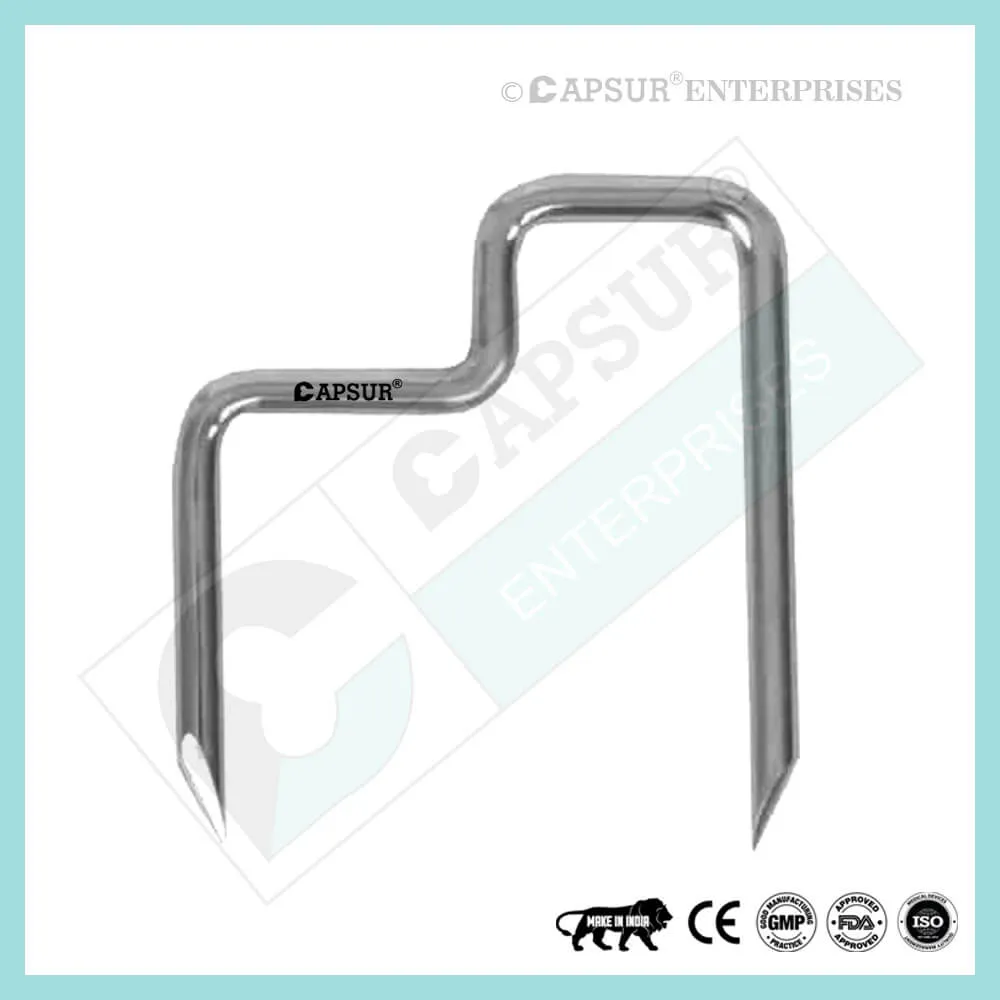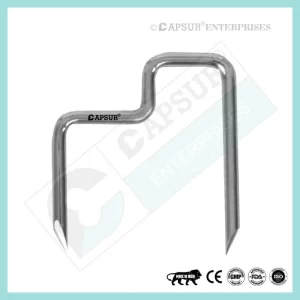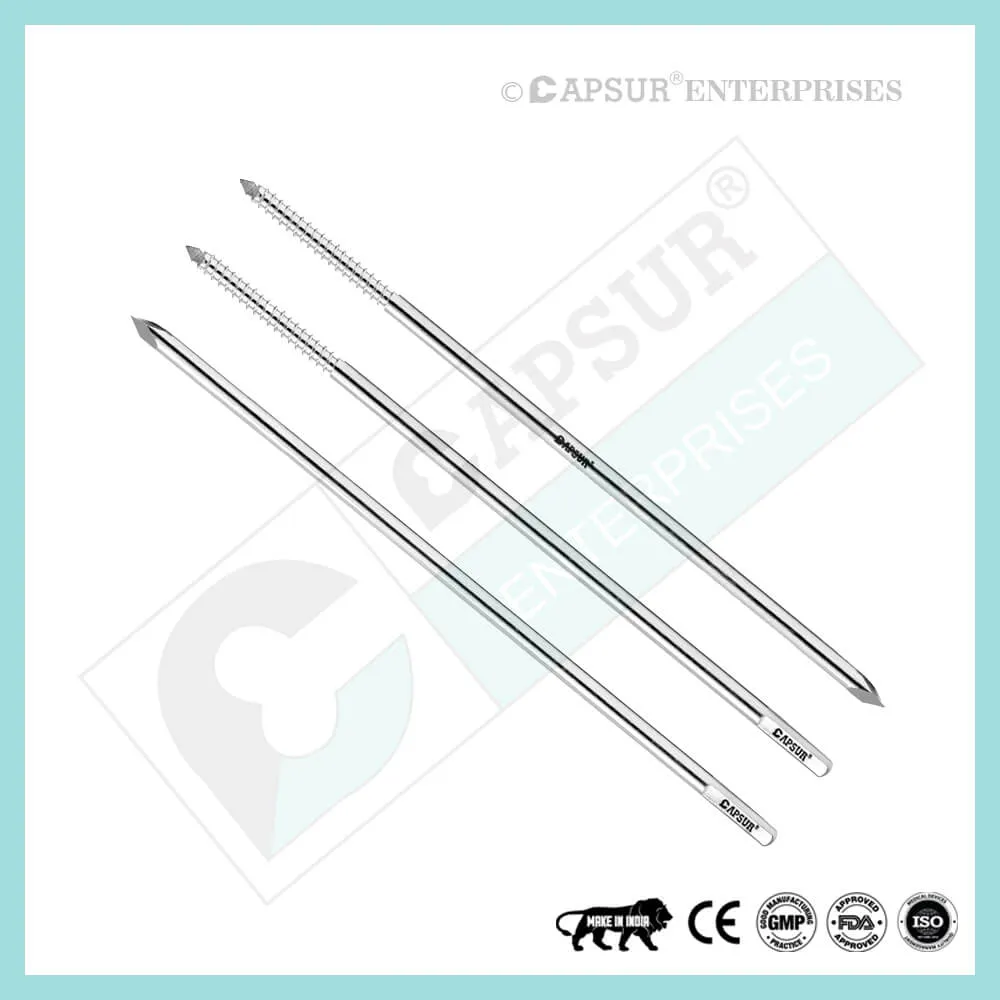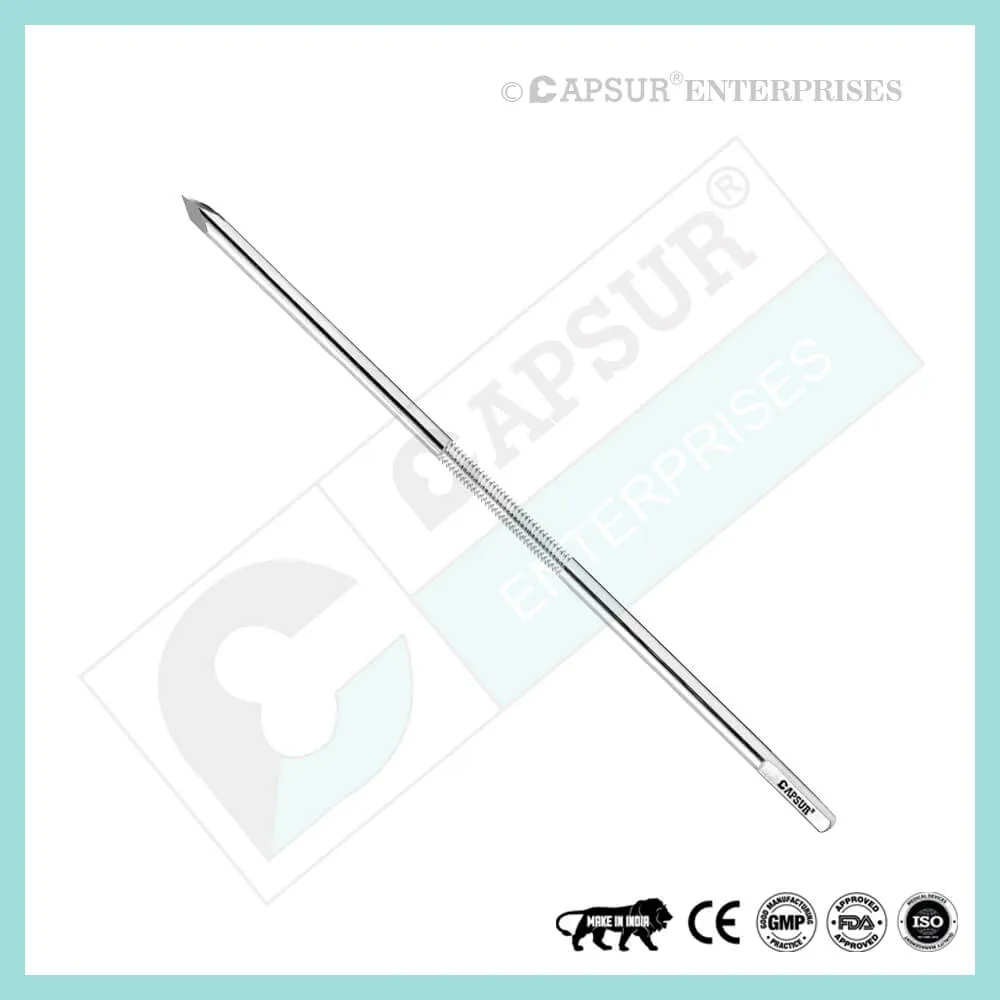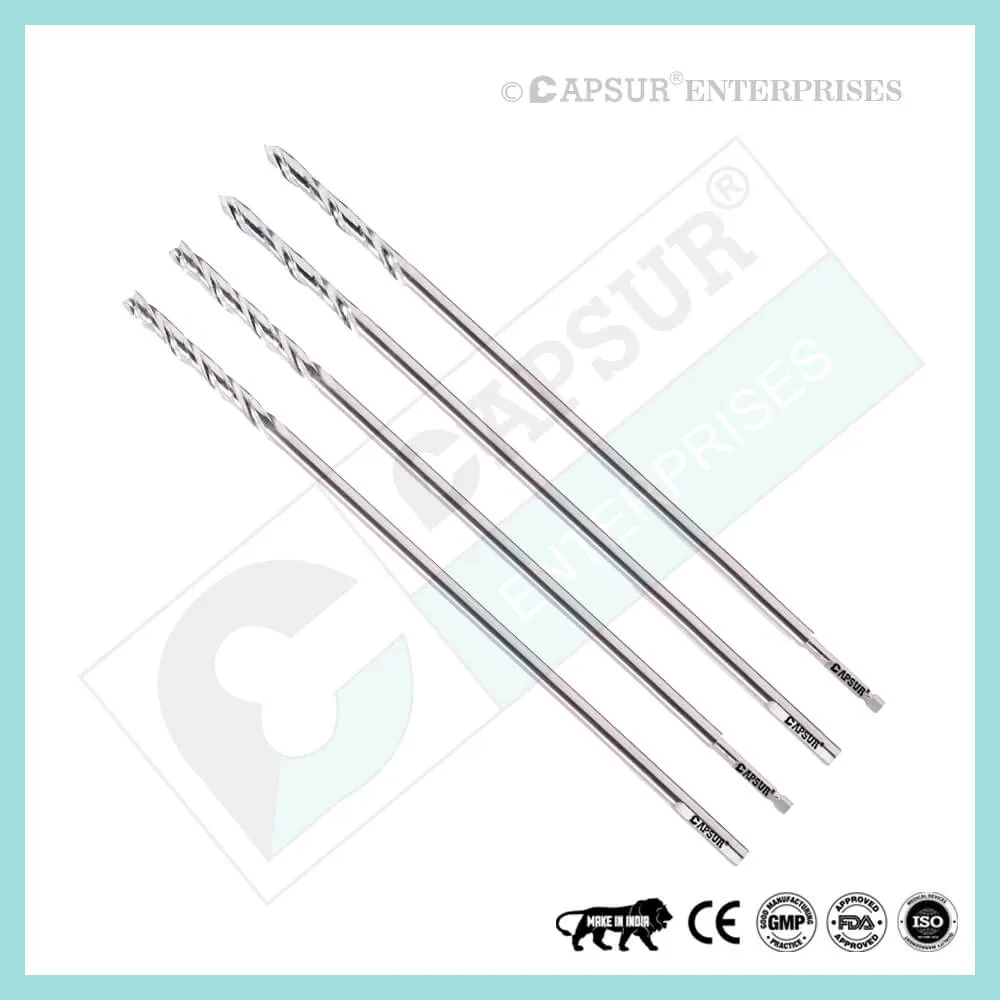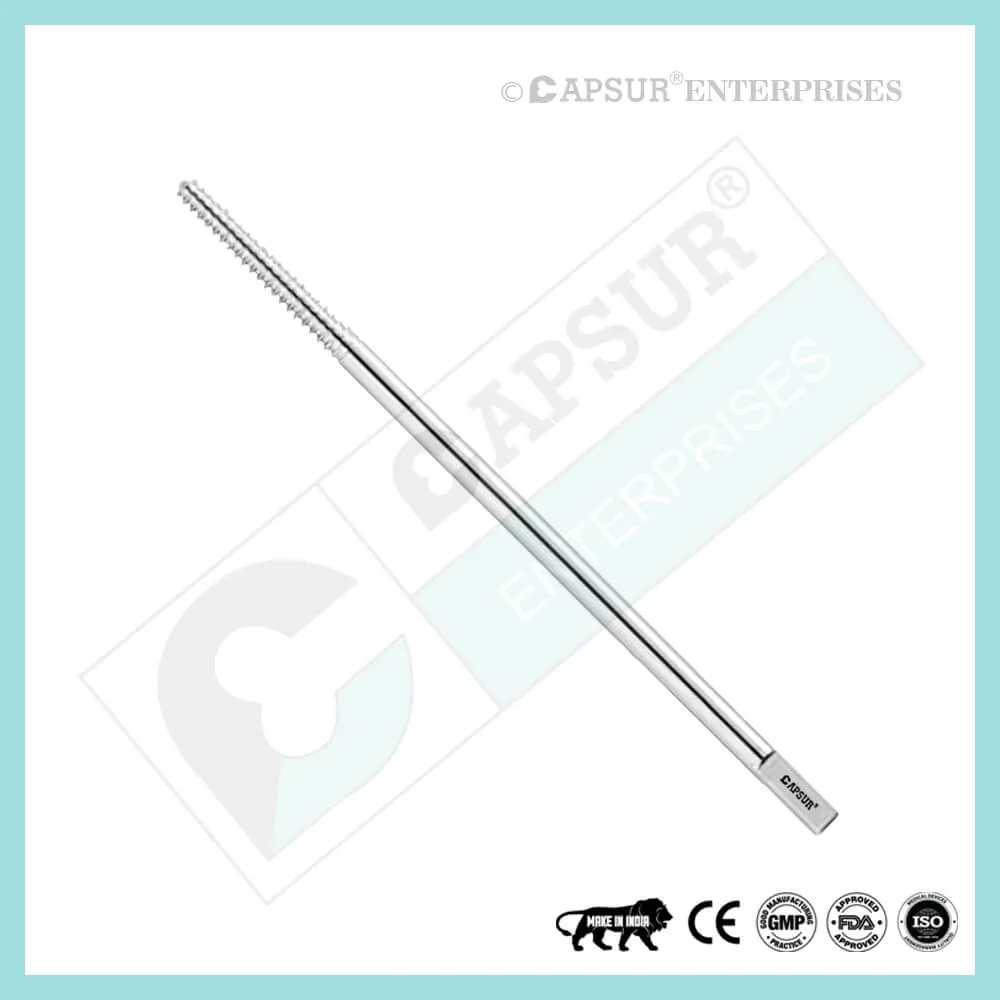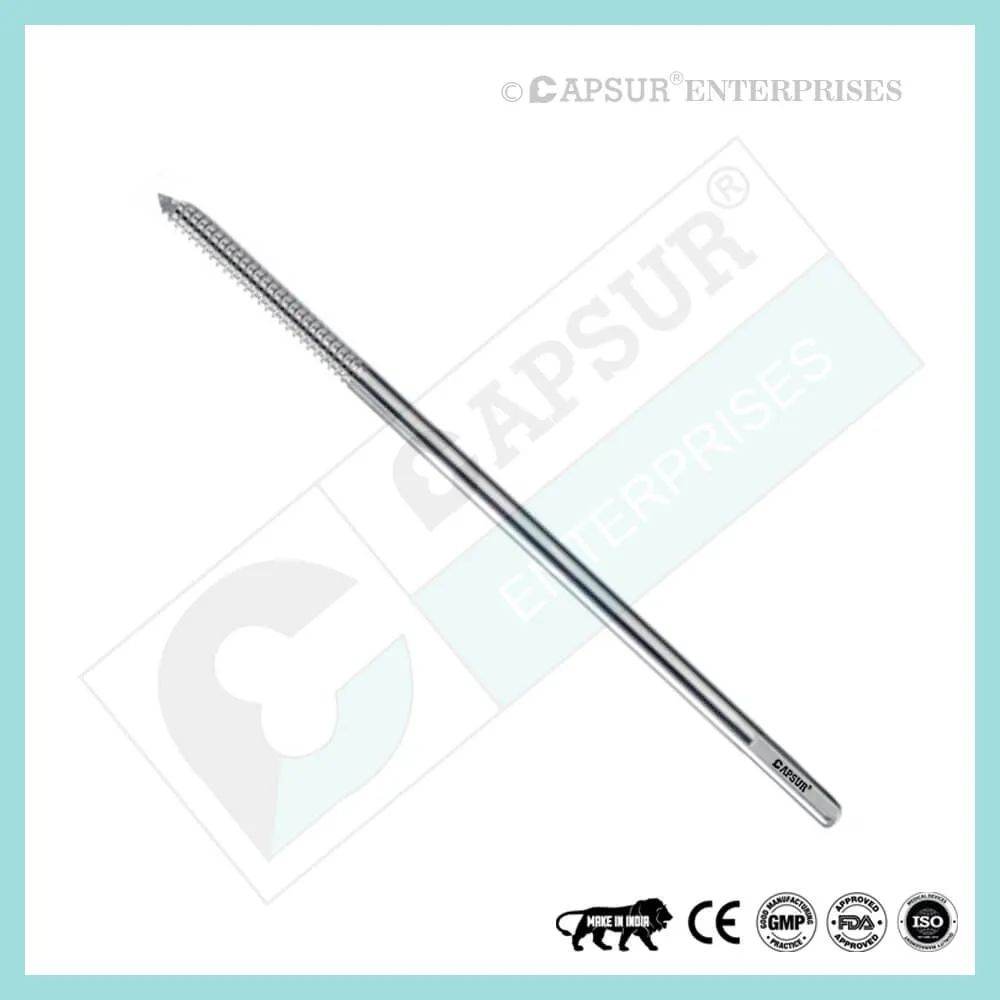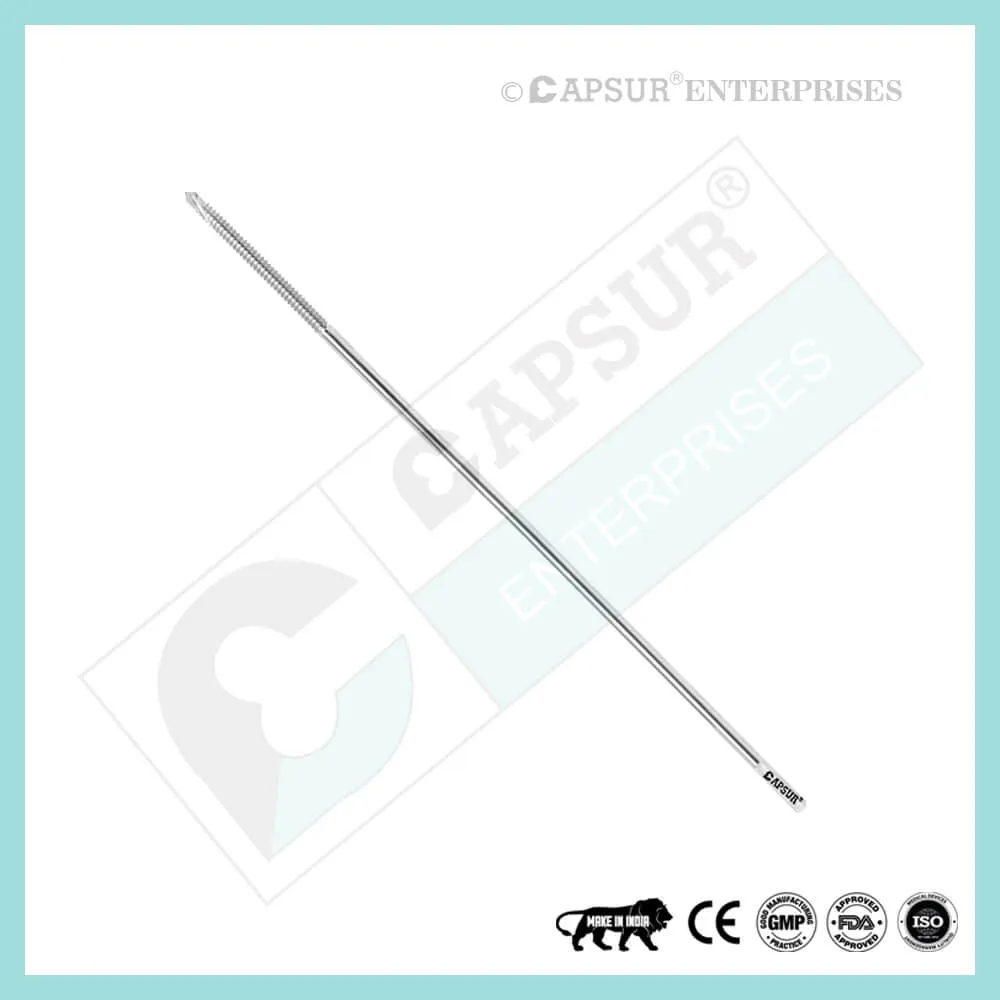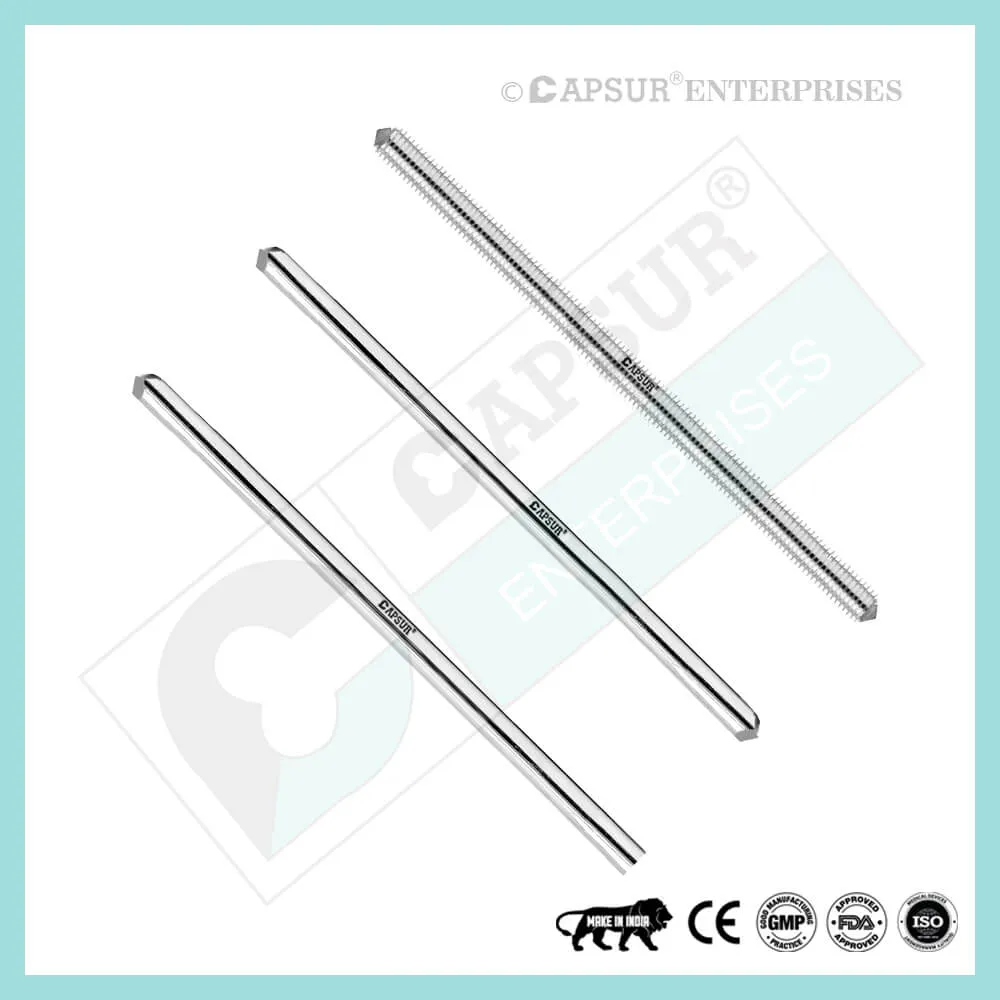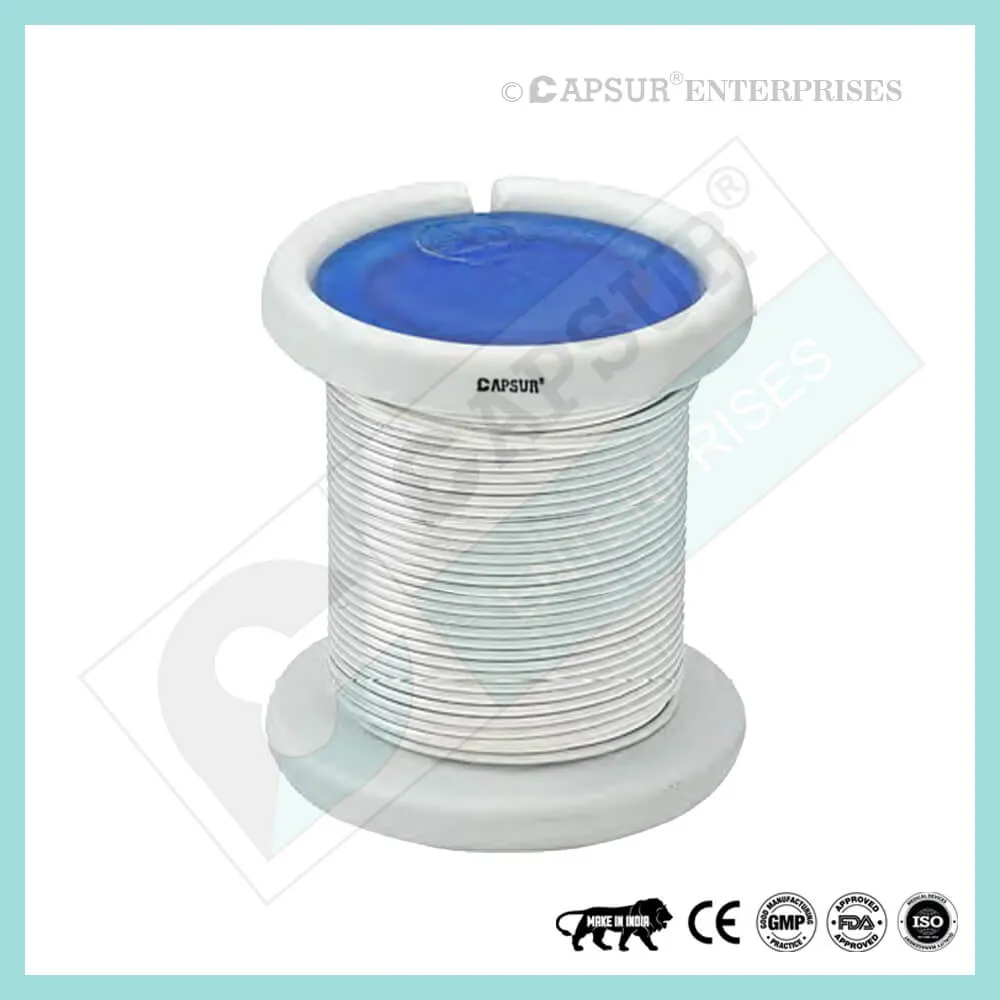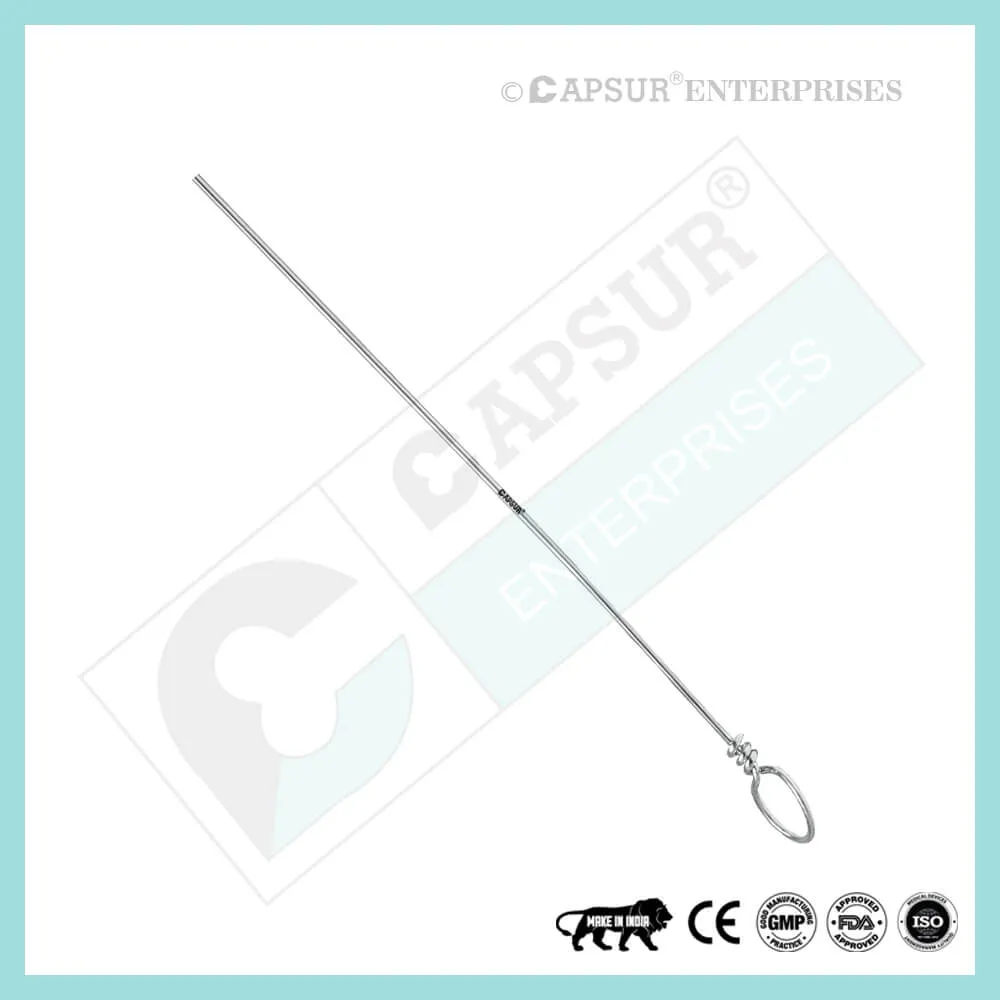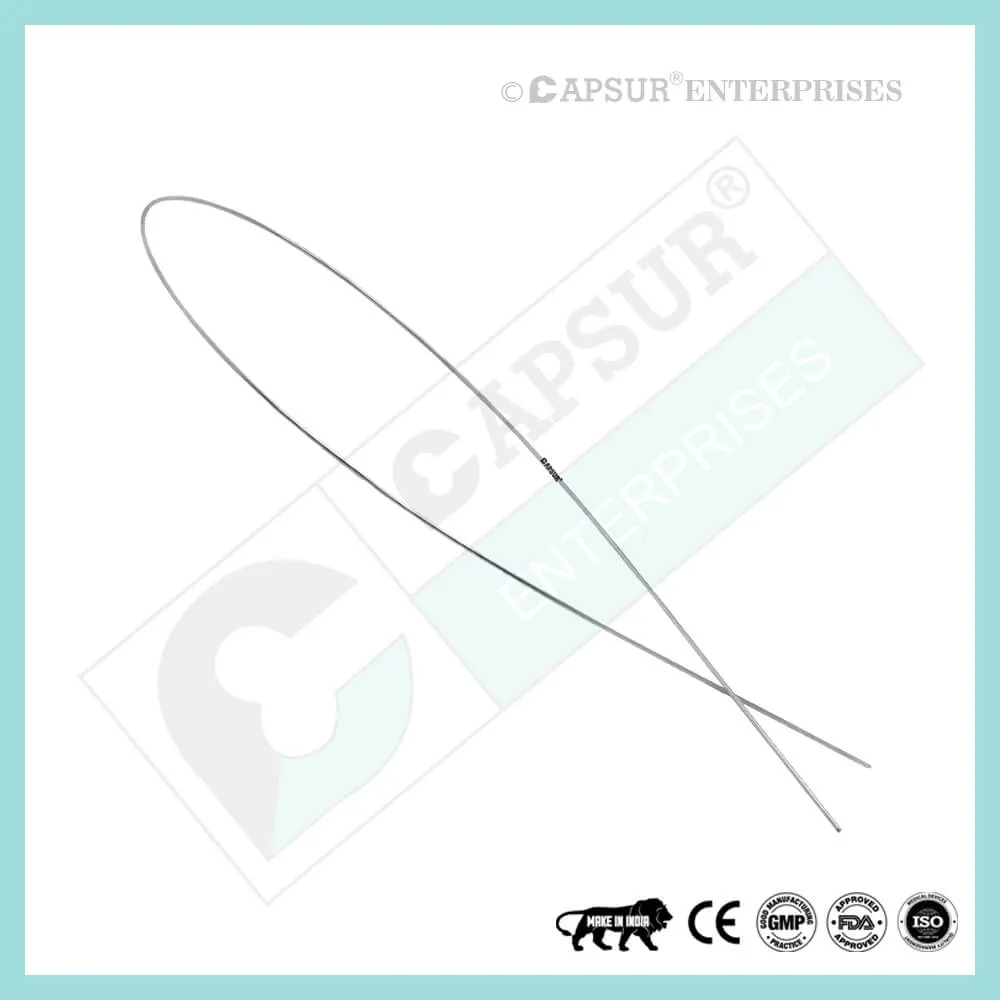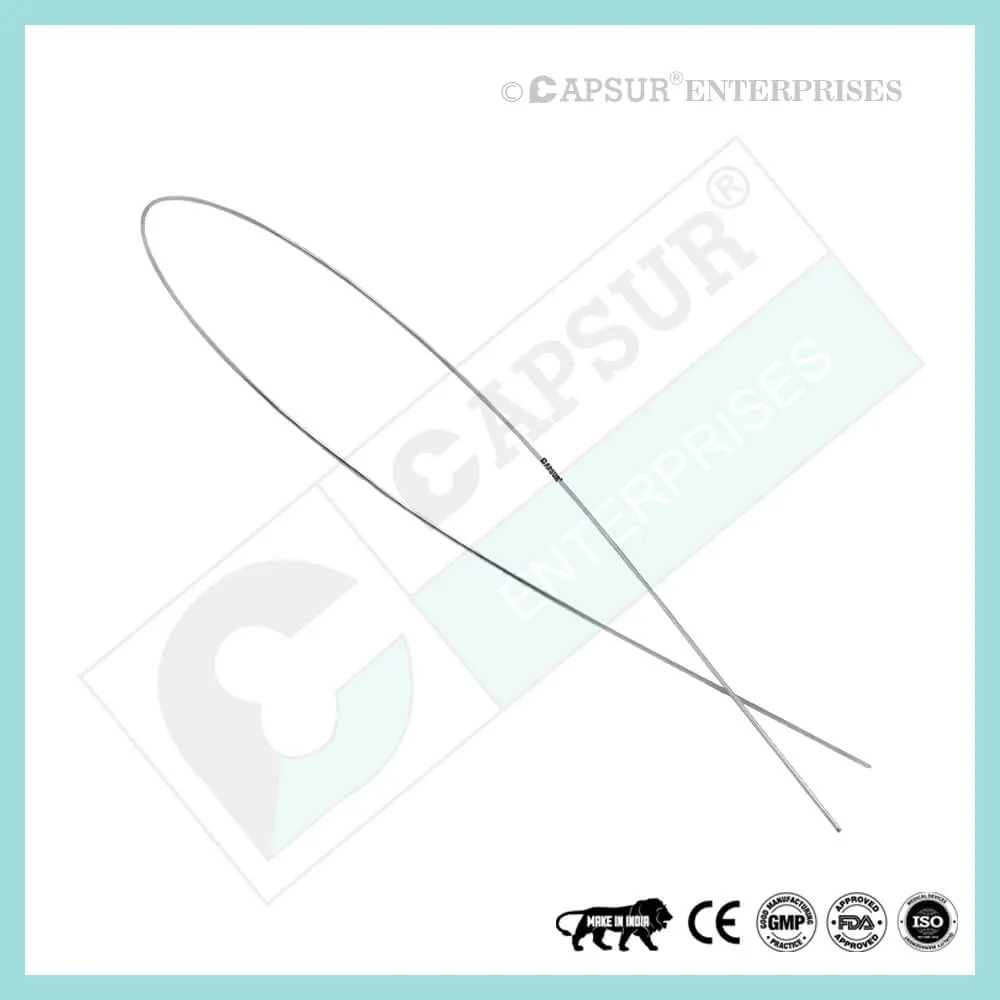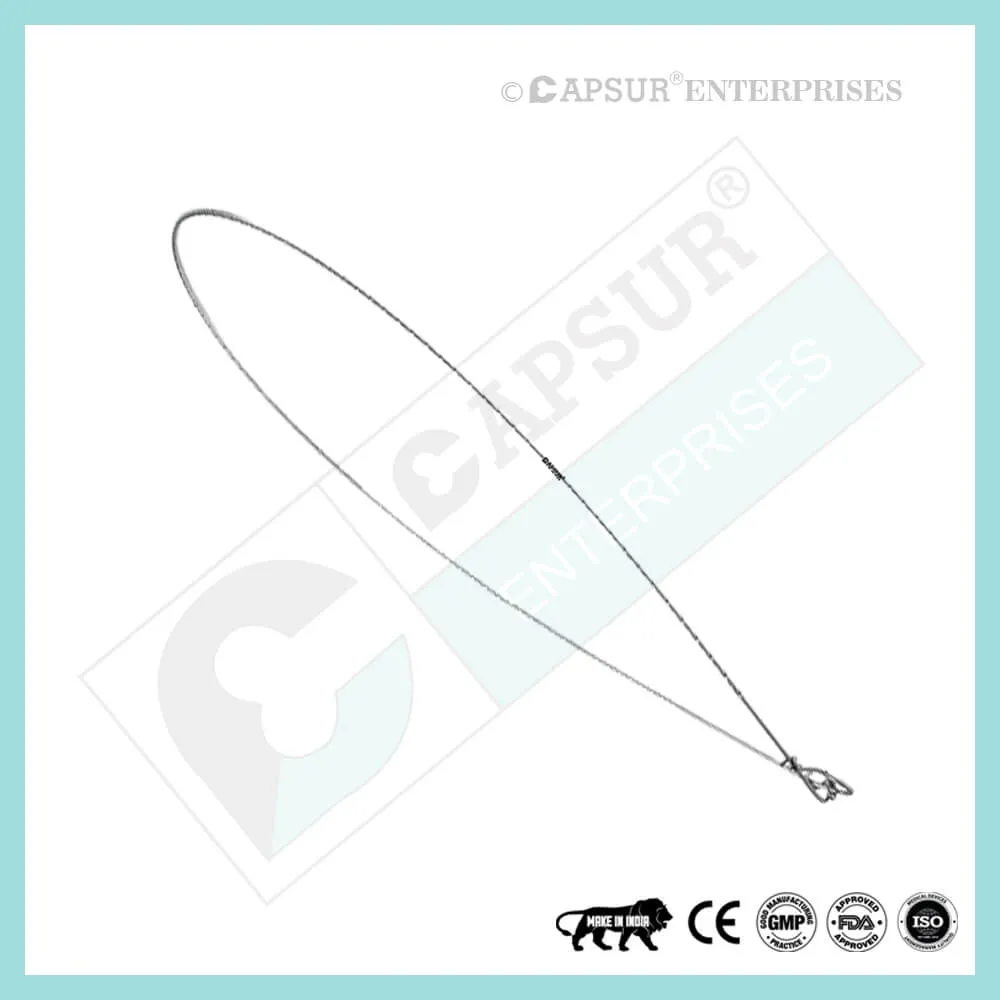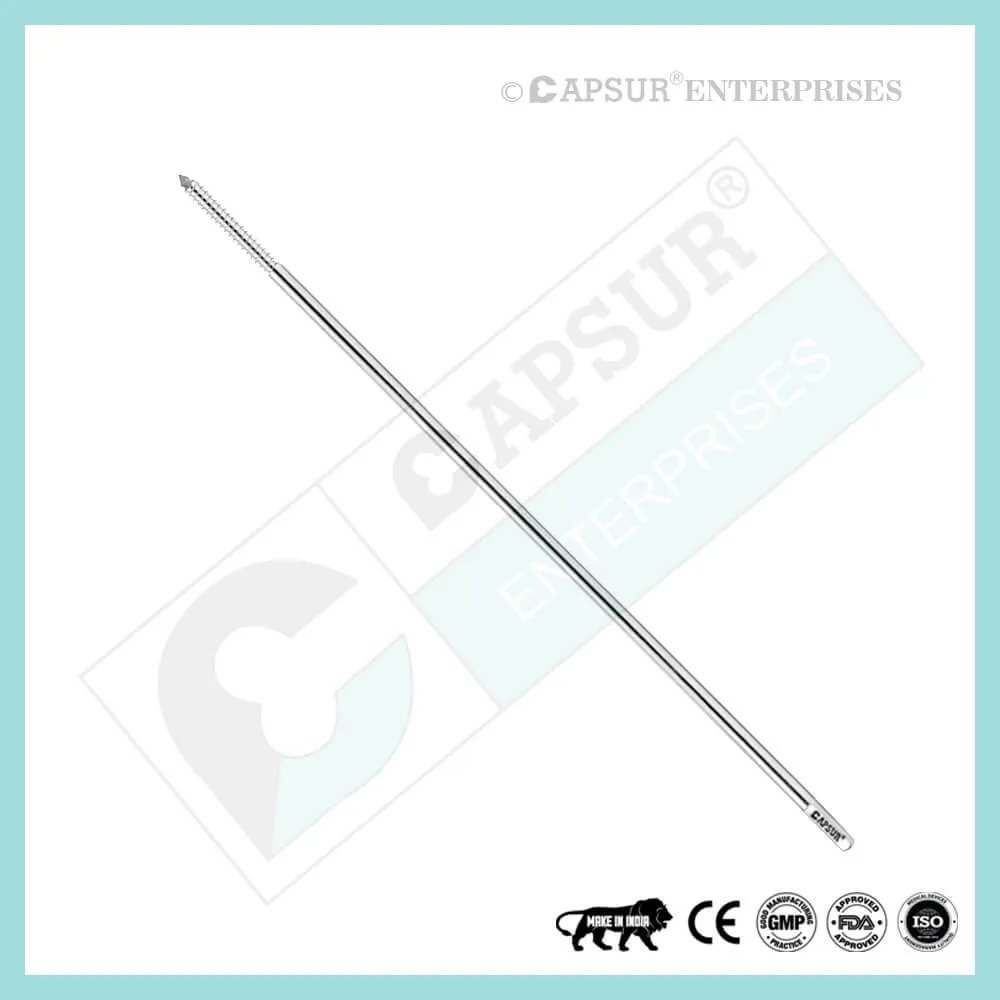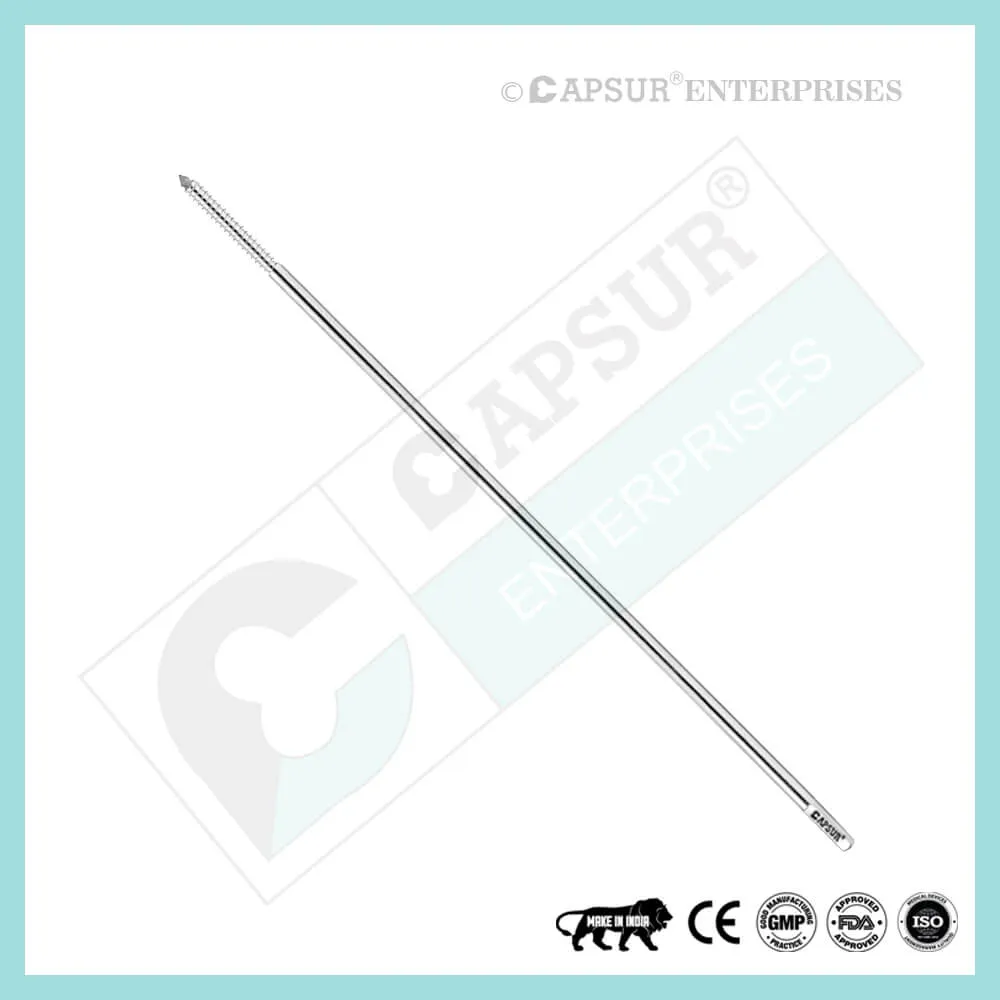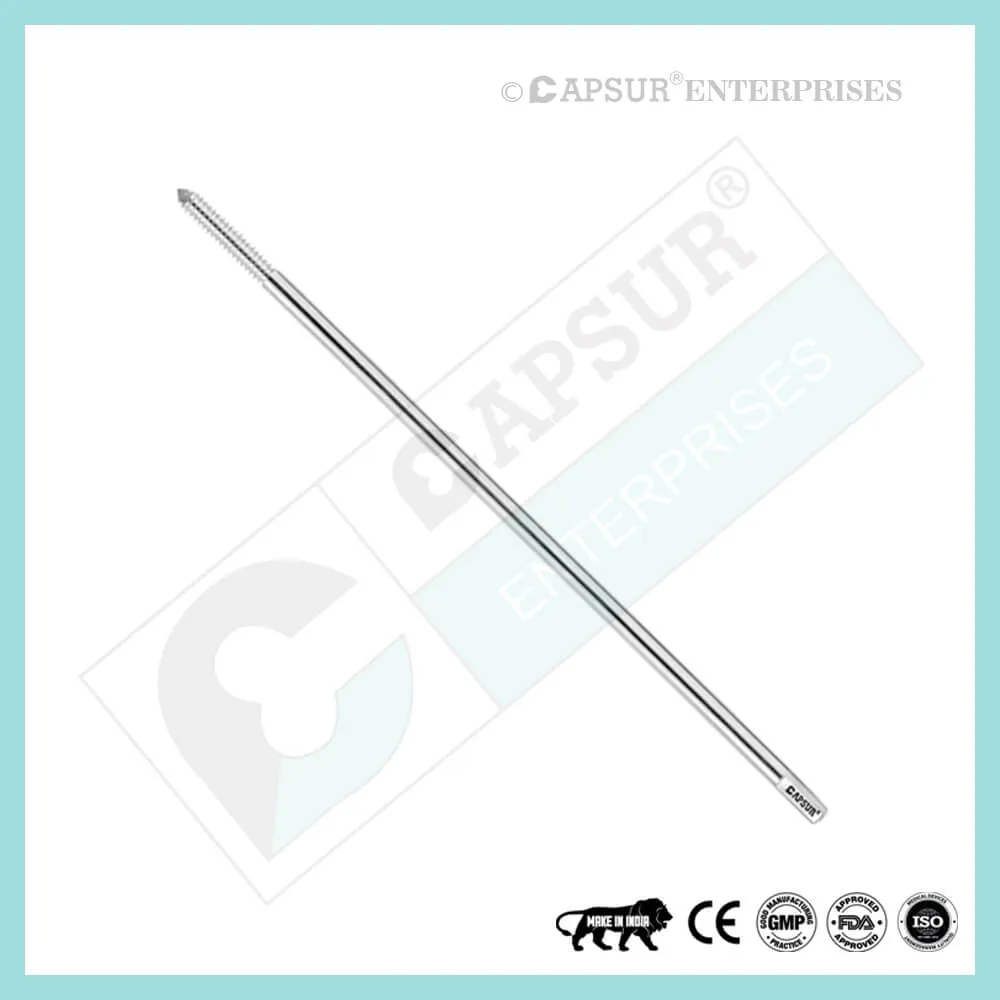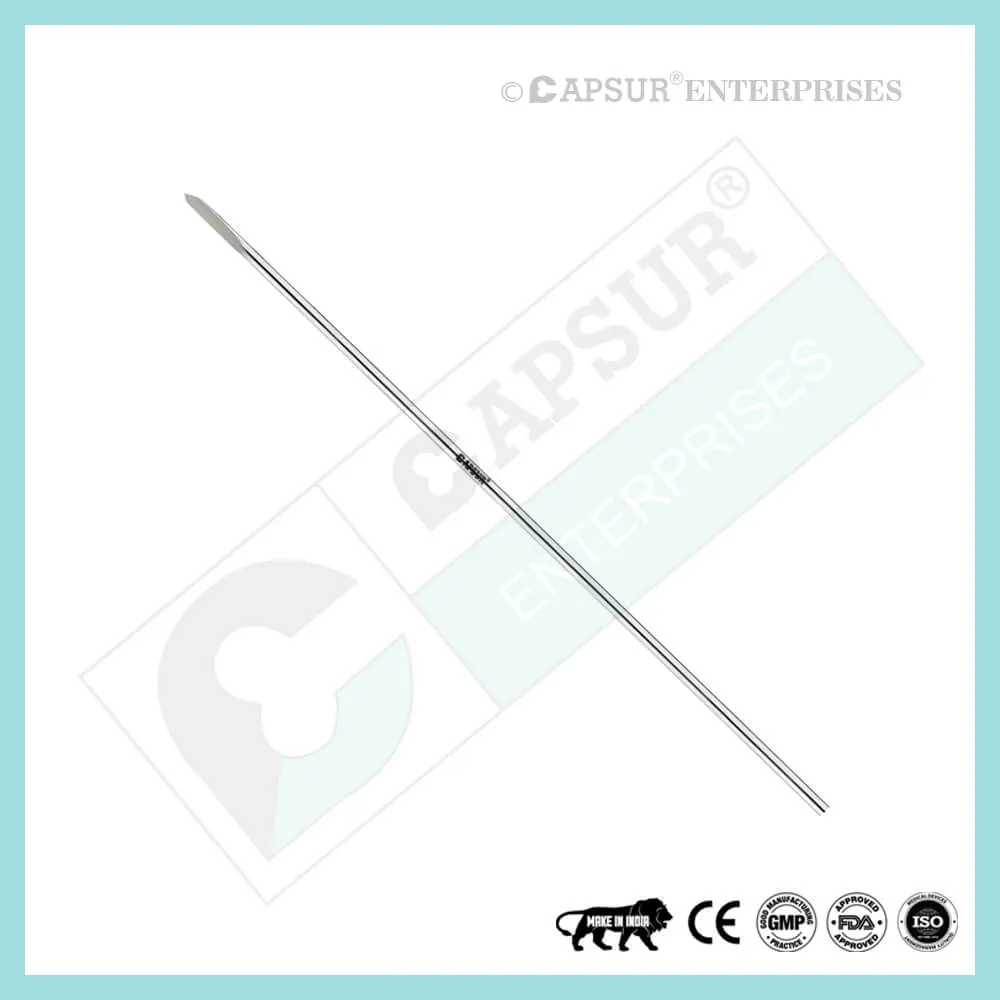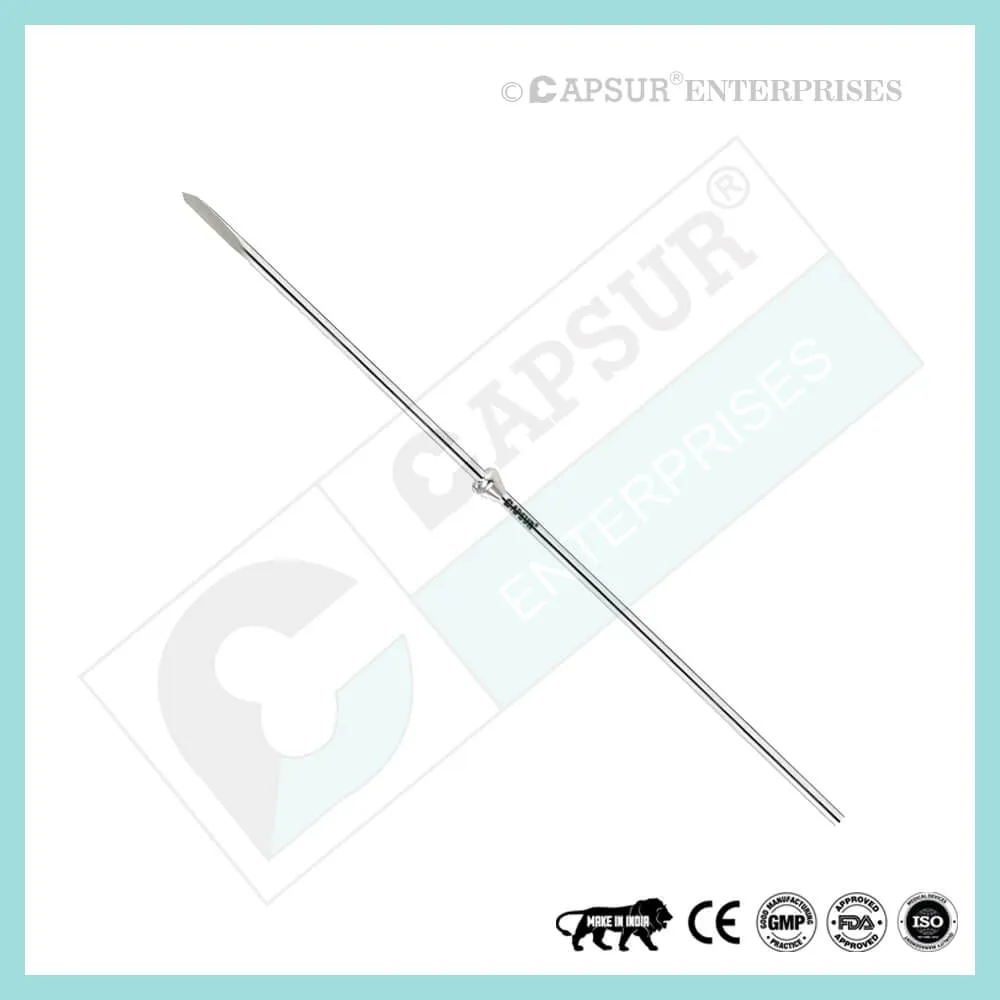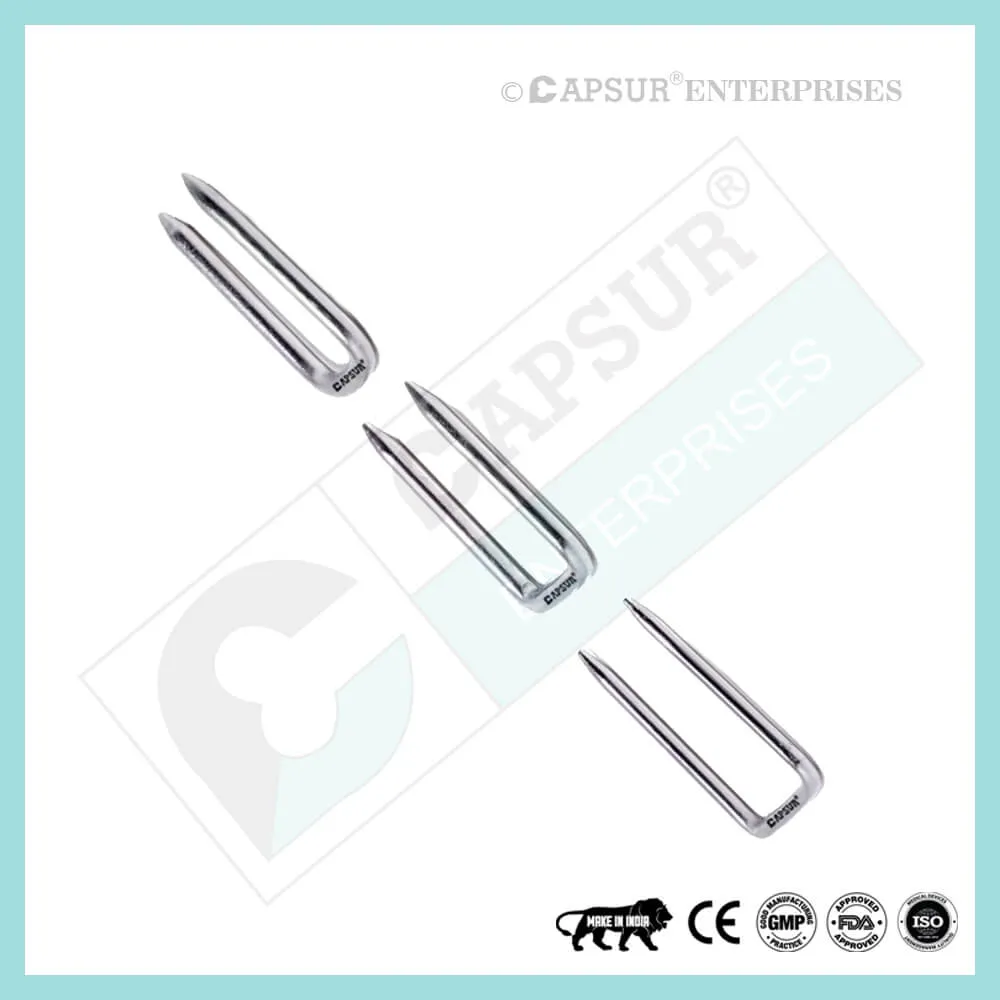Model No: 124433-A12
- Best Quality
- Affordable Pricing
- On-Time Delivery
- Customer Satisfaction
Specification of Coventry Staple
The Coventry Staple is used to treat angular knee deformity. On each side of the epiphysis, use two or more Coventry Staples.
To ensure the highest quality, our Coventry Staples are made from the best medical-grade materials available. Coventry Staples come in various sizes, including:
- Dia(D) x Length(A) x Length(B) x Length(C) : 2.5 x 25 x 33 x 5 mm
- Dia(D) x Length(A) x Length(B) x Length(C) : 2.5 x 25 x 33 x 10 mm
- Dia(D) x Length(A) x Length(B) x Length(C) : 2.5 x 25 x 33 x 15 mm
Other Important Info of Coventry Staple
Coventry Staple for angular deformity at the knee
Between 1954 and 1973, 56 patients with angular deformities of eighty-two knees received Coventry Staple treatment and were monitored until they reached adulthood. There were eighteen bowlegs and sixty-four knock-knees. Long legs were stapled asymmetrically in 12 patients who also had leg length differences. Before the Coventry Staple was removed, the deformities were given time to overcorrect, but 22 patients with 35 deformities experienced the rebound phenomenon. The Coventry staple was removed from older kids when their legs appeared straight.
Exaggerated physiological deviations might naturally correct themselves. Before the skeletal age of eleven for girls and twelve for boys, they shouldn’t be stapled. The earlier correction of secondary deformities. There weren’t any major issues. Coventry Staples required ten revisions due to extrusion or shifting. 87 percent of the deformities had satisfactory or improved outcomes. When necessary, Coventry stapling is a secure and reliable way to treat growing children’s angular deformity at the knee.
Control of bone growth by Coventry staple
The elongation of bone at the distal femoral and proximal tibial epiphyses is abruptly and almost completely stopped by effective stapling.
Compared to other operative methods of controlling bone growth, this procedure is less involved and carries a lower risk of complications.
Angular deformity may be fixed while the child is growing. It takes little time to correct knock-knee, bowleg, back-knee, flexion deformities, or combinations of these deformities.
If growth after stapling occasionally exhibits complicating irregularities, these should be clinically identified and corrected right away by rearranging the staples.
Growth at the epiphysis resumes at roughly the same rate as would be anticipated on the other side, if both sides were normal, after the Coventry staples are removed. It fluctuates between being faster and slower. Other factors than Coventry staples are typically to blame for rate variations.
The persistence of a straight extremity following the correction of an idiopathic knock-knee is the best indication of the normal rate of growth following removal of Coventry staples.
Coventry Staple Risk Factor
When assessing the prognosis in each case, contraindications—which may be partial or complete—must be taken into account. Under the following circumstances, alternative management strategies may need to be taken into account:
- infections that are systemic or local, acute or chronic.
- either localized, systemic, or chronic inflammation.
- serve as a dangerous vascular, nervous, or muscular disease.
- Bone defects that would prevent the implant from being properly anchored.
- All associated illnesses that might jeopardize the implant’s success and functionality.
Warnings and Precautionary for Coventry Staple
Before using Coventry Staple, the surgeon and supporting personnel should read the safety instructions in this document as well as any product-specific information in the product description, surgical techniques, and/or brochures.
Coventry Staples are created with the utmost care using materials of the highest quality for medical use. If these high-quality Coventry staples are used properly, they guarantee the best working outcomes. The usage guidelines and safety advice that are provided below must be followed.
Coventry Staple misuse can result in injury to the operator, patients, or other people as well as tissue damage, premature wear and tear, instrument destruction, and instrument destruction.
It is essential that the operating surgeon actively participate in the medical care of their patients. All facets of the surgical procedure and the tools used, including their limitations, should be fully understood by the surgeon. It is the surgeon’s and the surgical team’s responsibility to take care in the selection and use of surgical instruments. Before using the Coventry Staple, adequate surgical training should be obtained.
The following variables could harm the operation’s success:
- implanted material allergies.
- specific bone tumors.
- both osteoporosis and osteomalacia.
- disordered metabolism and systemic disease.
- abuse of drugs and alcohol.
- The implant is exposed to blows and/or excessive loading during physical activities that involve strong shocks.
- Patients who are mentally incapable of understanding and following instructions from the doctor.
- unhealthy in general.
- Effects that could be harmful
- The most frequent side effects of implantation are the ones listed below:
- Implant loosening that may be brought on by the fixation site being loaded repeatedly or by the implant’s being reacted to by the tissue.
- infection both early and late.
- additional bone fracture brought on by unusual stress or weakening of the bone matrix.
- pressure or hematoma-induced temporary or permanent neural damage.
- Hemorrhages and slow wound healing.
- Heart arrest, pulmonary embolism, and venal thrombosis are examples of vascular disease.
- Ossification that is heterotopic.
- Due to the implant, there is pain and discomfort.
- Failure due to mechanical forces, such as bending, loosening, or breakage of the implant.
- Implant migration that causes harm.
Preoperative Planning for Coventry Staple
Following a thorough clinical evaluation of the patient, the operation is planned. X-rays are also necessary to provide a clear picture of the bony anatomy and any associated deformities. The entire set of implants must be available at the time of the operation, along with the appropriate implantation tools.
The potential risks and side effects of using Coventry Staple should be discussed with the patient by the clinician. If the patient has allergies to any of the implant materials, it is crucial to know this before surgery. Additionally, the patient needs to be made aware that the device’s performance cannot be guaranteed because problems may reduce its lifespan.
Coventry Staple Precautions
During reprocessing, verify that the instruments are functional and look for wear. Before using, replace any worn-out or broken instruments.
It is advised to use the tools designated for this screw.
Use caution when handling equipment, and put used bone-cutting tools in a sharps container.
Always use suction and irrigation to remove any debris that may be produced during implantation or removal.
Coventry Staple Warnings
When put through excessive force, Coventry staples have the potential to break while in use. We advise that the broken part be removed whenever possible and practical for the particular patient, though the surgeon will ultimately decide whether to do so based on the risk involved. Be aware that implants lack the natural bone’s strength. Significant loads may cause implants to fail.
The user’s glove or skin may be pinched or torn by the sharp edges or moving joints of some instruments, screws, and cut plates.
Be sure to get rid of any fragments that weren’t fixed during surgery.
While the surgeon will ultimately decide whether to remove the implant, we advise that fixation devices be taken out as soon as it is safe and practical for the specific patient and after their purpose as a healing aid has been fulfilled. To prevent refracture, implant removal should be followed by adequate post-operative care.
Coventry Staple General Adverse Events
There are risks, side effects, and adverse events associated with all major surgical procedures. While there are many possible reactions, the following are some of the most frequent ones: issues related to anesthesia and patient positioning (such as nausea, vomiting, dental injuries, neurological impairments, etc.), thrombosis, embolism, infection, damage to nerve and/or tooth roots or other critical structures, such as blood vessels, excessive bleeding, damage to soft tissues, including swelling, abnormal scar formation, functional impairment of the musculoskeletal system, and pain.
| Coventry Staple |
|---|


